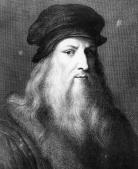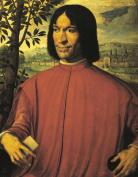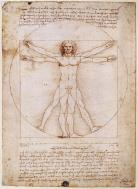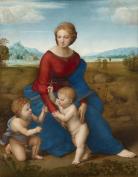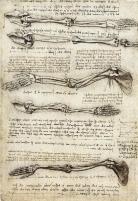Medieval to Renaissance
Created by Dino Franco Felluga on Tue, 05/21/2019 - 11:27
Part of Group:
This is a timeline that encompases the major events that led up to the change from the medieval period to the renaissance.
Timeline
Chronological table
| Date | Event | Created by | Associated Places | |
|---|---|---|---|---|
| 15 Apr 1452 |
Leonardo da VinciLeonardo da Vinci was born April 15, 1452 in Vinci, Italy. As a child he did not have any special formal education, but when he was a teenager his father recognized his artistic talent and arranged for him to be trained under the famous artist Andrea del Verrochio from Florence. From this apprenticeship he was introduced to many technical skills such as metal working, as well as improving his painting and sculpting techniques. Since he was a scientist, artist, and inventor among many other things, his knowledge of many disciplines gave him the title of a Renaissance Man. His most famous paintings are the Mona Lisa and The Last Supper, and he is also recognized for his study of human anatomy and his many inventions. He died at 67 in the year 1519. Image source: Wikimedia commons, listed as public domain in the United States because it is a photographic reproduction of a public domain work of art. |
Juliana Ilmain | ||
| 1469 |
Lorenzo de MediciLorenzo de Medici, the grandson of Cosimo de Medici, came to power in 1469. Lorenzo is thought of as the most powerful patron of the Medici family and is remembered as the greatest patron in the history of Italy. Some of the talent Lorenzo sponsored as a patron includes Michelangelo Buonarroti and Leonardo da Vinci, two of the most famous people in history. Under Lorenzo's rule, Florence earned its reputation as the most beautiful city in Europe. Additionally, the economy of Florence prospered like never before. |
Mara Kossoff | ||
| 1490 |
Vitruvian ManVitruvian Man is a famous drawing done in ink that brings together the art of anatomy and mathematics. The artist Leonardo da Vinci made this based on the writings of Vitruvius, a Roman architect, author and engineer. His works described the exact measurements and proportions of the human body, which was applied to da Vinci's art. Two images of a man standing in a square and a circle are superimposed. The geometry of the art has every part of the body measured, with notes alongside from Vitruvius' work. This demonstrates his close attention to proportion and the blend between art and science. Image source: Wikimedia commons, Vitruvian Man. Listed as public domain in the United States because it is a photographic reproduction of a public domain work of art. |
Juliana Ilmain | ||
| circa. 1505 |
Renaissance Painting TechniquesThe Renaissance brought about a new tradition in the field of art. Artists sought to achieve a greater sense of realism and naturalism in their paintings, as opposed to the rigid and stylized characteristics of the preceding medieval and byzantine periods. Artists were aided in achieving this goal in part through the development of oil paint, which in turn gave rise to the development of new painting techniques. The most important techniques that were established during the renaissance were sfumato, chiaroscuro, perspective, foreshortening and proportion. The advent of these techniques marked a significant shift in art history. Sfumato, a term coined by Leonardo da Vinci, refers to the subtle blending of colors and the blurring of sharp lines. Chiaroscuro is the use of strong contrast between light and dark to create depth. Perspective, foreshortening and proportion all relate to the use of mathematical principles to establish lines used to create the illusion of depth. Used in combination, these techniques greatly contributed to an artist’s ability to create three dimensional figures on a two-dimensional plane.
Sources Gombrich, E. H. Art and Illusion: A Study in the Psychology of Pictorial Representation. Princeton University Press, 1960. Wikipedia, the free encyclopedia. “Renaissance Art.” Wikipedia, Wikimedia Foundation, Inc. , 6 Mar. 2018, en.wikipedia.org/wiki/Renaissance_art#Techniques. Image Retrieved from Wikimedia Commons, fair use
|
Lauren Krieger | ||
| 1957 to 1957 |
Rediscovery of Leonardo da Vinci's NotebookIn 1957, Italian historian, Carlo Pedretti, rediscovered Leonardo da Vinci’s notebook. The notebook included the notes and sketches for da Vinci’s anatomical research and many mechanical designs, including the mechanical knight. The image is one of the pages from da Vinci’s notebook. The notes pictured are from his anatomical study of the human arm. Image: Public Domain, https://commons.wikimedia.org/w/index.php?curid=59576 |
Susannah Pritchett-Montavon |

